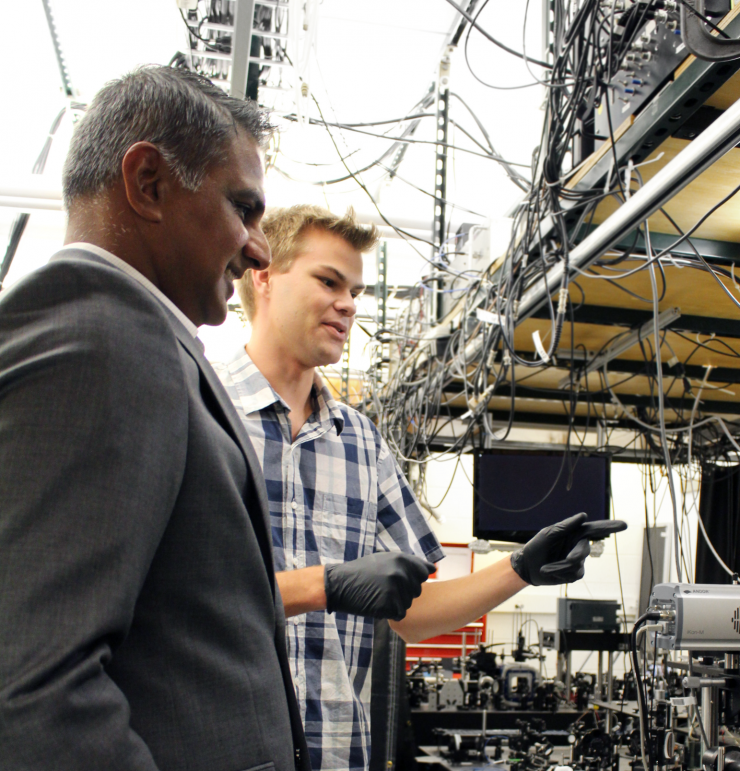5 Questions with the New IMat Advisory Team | Quantum Materials
Nov 03, 2021 — Atlanta, GA

Chandra Raman with a Student in his Research Lab
1. What is your field of expertise and at what point in your life did you first become interested in this area?
My expertise is in the quantum physics of neutral atoms. Traditionally most research in this field has been done within the confines of a laboratory, with experiments done on tables that are filled with equipment such as lasers, optics and evacuated chambers, and all connected up with tons of electrical cables. About 10 years ago I began to wonder how to turn such bespoke, one-of-a-kind experiments into highly reproducible devices that can be carried around by a person (and eventually fit into a cellphone). The potential applications of this are enormous--atoms are incredibly precise sensors that could revolutionize timing and navigation by eliminating our dependence on GPS. They could also be the paramount platform for building the next generation of quantum information devices that can transform the world of computing and information. I’m super excited to harness atoms for real-world applications!
2. What questions or challenges sparked your current materials research?
I realized in my journey that materials are the key to making new things happen in this field. For instance, a lot of what I do currently revolves around silicon, which is not a traditional material used in atomic physics or for bulk optics. If we don’t explore new materials and materials processing methods we will miss out on large opportunities to solve the problems in quantum device development.
3. Why is your theme area important to the development of Georgia Tech’s Materials research strategy?
When I first started as an Initiative Lead in IMat, I was struck by how close the worlds of materials science and physics are. Many of the faculty come from a Physics background and appreciate the quantum way of thinking. Although we are separated into two Colleges at Tech, there is so much overlap in the way we think that it’s clear we need to collaborate more. In addition, I believe quantum computing, sensing and information is a huge opportunity for us at IMat and at GT more generally because a) there is a lot of federal and commercial funding in this area currently, and b) it leverages several of our key strengths. Materials fabrication and characterization is one of the key calling cards that can define Georgia Tech’s competitive advantage in applying for Center grants and for large-scale team formation. It is very much within the mission of IMat, I feel, as an interdisciplinary Institute.
4. What are the broader global and social benefits of the research you and your team conduct?
Quantum technologies offer the prospect of highly secure communications, which could have a profound influence on industries such as banking, for example. They also might be able to solve ultra-hard problems that current computers cannot tackle, for example, discovering the structure and function of complex molecules, which would enable drug discovery. Quantum computers might even illuminate some of humanity’s greatest mysteries about the cosmos and physical law. At a more personal level, I would be thrilled if quantum ideas became commonplace, i.e. to teach ideas such as superposition and entanglement in elementary schools.
5. What are your plans on engaging a wider GT faculty pool with IMat research?
I am learning more and more about what people do in IMat, and I’m excited by it, as I feel new doors have opened up. I’m also hoping to serve as a bridge between IMat and Physics, to enable new collaborations. One-on-one discussions are a key part of moving that process forward, and I’m confident that we will develop new synergies in this area.




